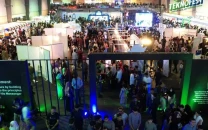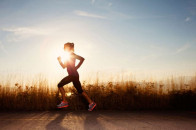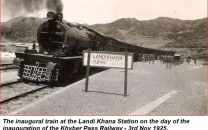An unconventional duo of wood and ceramics open up to Islamabad
Two artists use out-of-the-box methods to redefine old concepts.

An unconventional duo of wood and ceramics open up to Islamabad
Unconventional art pieces employing wood, photography and ceramics went on display at the Nomad Art Gallery on Tuesday.
Shunning conformist methods like using the finest materials or carrying out the step by step process for producing ceramic pieces was the order of the day for Nasir Malik and Abbas Shah, two artists known for their unorthodox techniques.
The gallery featured interesting wood sculptures by Shah along with Malik’s work which consisted of Raku-yaki and photography portraying heritage sites. Both artists used methods that are rarely practiced by others.
For Malik, wood symbolises life and its companionship to man. “I respect wood, it [helps us survive] and once our purpose is served we tend to forget all about it,” said Shah.
He said he uses easily available wood, such as mulberry tree deadwood, to make his pieces.
The artist used termites to sculpt the wood, taking three years to make his six pieces. He buried the wood in mud for two years so that termites could infest it and create pathways.
He then followed the path of the termites to create the pieces. “The real sculptors are the termites!”
It is hard to believe that the beautifully sculpted pieces were originally generally overlooked deadwood. On each piece the artist leaves his signature mark of a finely carved shell that personifies life, according to the artist.
Malik’s ceramic pieces are each one of a kind. He deploys Raku-yaki, an ancient Japanese style of pottery. The method involves introducing the pieces to extreme temperatures.
First the pieces are rapidly heated to a temperature of 960 Celsius. And then, instead of being allowed to cool in the open air, which is the usual procedure, this method exposes the pieces to freezing temperatures immediately. A little more than half of the pots last till the final stage.
The pieces each have different colour patterns in shades of black, red and green. Each piece changes colours according to the weather due to the chemical reactions of the salts used to produce them.
“I was originally involved in biochemistry before transitioning to art, therefore I was more interested in finding quick results instead of following the step by step processes involved in art,” said Malik, adding that he has tried to merge science with art and introduce techniques that produce quick and effective results.
Malik believes in “thinking beyond the obvious”, a dictum evident not only in his ceramic work but also in his photography. Instead of using light to capture pictures of old buildings and heritage sites, he uses dark tones and grey shades to depict a place and time that have long since disappeared. “There’s a moment in every picture!” said art enthusiast Sanam.
The exhibition features 53 pieces of Raku-yaki, 26 photographs and six sculptures. The heritage centric pieces being showcased at the gallery are easy on the eye and create a sense of curiosity for the viewers. The show will continue till October 18.
Published in The Express Tribune, October 12th, 2011.


















COMMENTS
Comments are moderated and generally will be posted if they are on-topic and not abusive.
For more information, please see our Comments FAQ